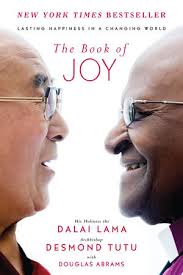Ch. 12: Managing Conflicts through Music: Educational Perspectives
Kjell Skyllstad,
Education for Empathy
The Resonant Community: A project created to address increased social tension and incidents of harassment in Oslo’s inner city schools with mixed ethnic populations.
- To spread knowledge and create understanding for the values that reside in the culture of immigrants by presenting live music and dance for children.
- To counteract racism by contributing to changes of attitude towards various immigrant groups through cultural differences.
- To bring out the musical resources that lie in the various immigrant groups in Norway, as well as to provide external professional support through performers from the immigrants’ home countries.
- To case the process of integration for immigrants through multicultural interaction.
The following approaches were chosen:
- Listening to live performances of music from Asia, Africa and Latin America facilitating a positive response to the cultural heritage of migrant students.
- Organizing music and dance activities, with special emphasis on improvisation, in order to foster group cohesion and integration.
Listening: A Transformative Experience
Maslow’s term “Peak Experience” refers to “encounters that involve a deep, structural shift in basic premises of feelings, thought and actions”. He also describes how ‘Peak Experiences’ can “lead to a new relationship with others and a change in world outlook”. (Maslow, 1968, p.101 in Skllstad p. 174)
In the Resonant Community project, “it was decided that dance activities should become a central arena for developing empathetic competence….the listening experience was described by many as becoming one with the music, living in expanded time and space, as well as experiencing a strong feeling of community.” (p. 174-175)
Ensemble Playing: A Key to Social Learning
“Research has shown that musical activities, especially in social settings, lowers the concentration of the hormone inducing aggressiveness-testosterone in men together with other behaviour-regulating hormones, thereby preventing social conflicts…Some tests indicate an increased production of oxiton, a hormone that strengthens social bonding between men and women and ensures greater group cohesion.” (p 176)
“In the face of conflicts in the local as well as the global arena, the rediscovery of the socially bonding functions of music is a pressing need. The musical ensemble may retrace its role as a central space or workshop for co-operative cultural and social learning, for problem solving, for developing a sense of “collective affectivity” and shared emotions, and for celebrating diversity.” (p. 177)
Building a Resonant School Community
18 Schools involved, targeting pupils ages 10-12 years:
- A Schools-6 schools to participate in an intensive arts education program (music, dance, performing arts) concentrating on immigrant cultures
- B Schools-6 schools to participate in an intercultural school concert program
- C Schools-6 schools to function as control schools
Results:
- “Considerably greater increase in the A-Schools (as compared to others) from 1989-1992 in the number of pupils who report that they have no personal problems with harassment or mobbing… The tendency towards better social relations and diminished ethnic conflicts is confirmed by reports from the teachers.
- “Attitudes towards immigration seem to have remained unchanged in the A-schools while there was an increased degree of negative attitudes found among the pupils in the B- and C-schools.
- “A greater number of pupils in the A-schools at the end of the project consider immigrants to be honest, law-abiding, industrious and kind, while there were fewer i the other school models.
- “Immigrant pupils the A-schools have strengthened their self-image during the project. The teachers reported that there had been a highly positive development in identity formation and activity level of immigrant pupils. ” (p.181)
Final thoughts:
“Multicultural music education bases itself on the ability of music to cross boundaries and communicate between cultures. This crossing of boundaries means that we finally begin to accept the artistic expressions of other cultures to be of equal value with our own cultural heritage. The aesthetic subjects can, in this way, lead the way to a necessary re-evaluation and restructuring of the content and methods in an intercultural direction. This will require a revision of teaching materials and curriculum plans in all subjects with the goal of removing mono-cultural bias and hidden value manipulation. But in a wider context, this should lead to a necessary re-evaluation also of the total social milieu which gives nourishment to prejudice.” (p. 182)
As a teacher, this final quote resonated deeply with me. I have come to acknowledge over the past few months how deeply oblivious I was to the euro-centric nature of the Ontario Music curriculum, and even my classroom itself. In the past I have prided myself on including musics and cultures other than Western-European, however it remains that the central focus and implied ‘normal music’ has been on European music. I have a great deal of thinking and planning to do in order to prepare myself for a new way of teaching and planning as I reenter the classroom in September!

 This year, we had the infamous Dr. John Feierabend, founder of the
This year, we had the infamous Dr. John Feierabend, founder of the 





 I am happy to share any resources, books, websites, etc that may be of use….but I tend to overwhelm people with resources when I get going!
I am happy to share any resources, books, websites, etc that may be of use….but I tend to overwhelm people with resources when I get going!

